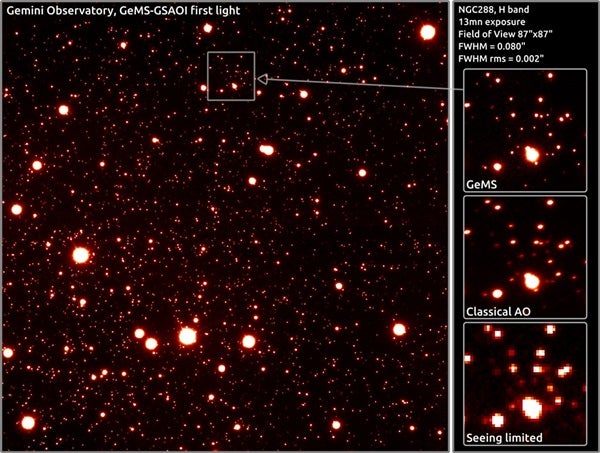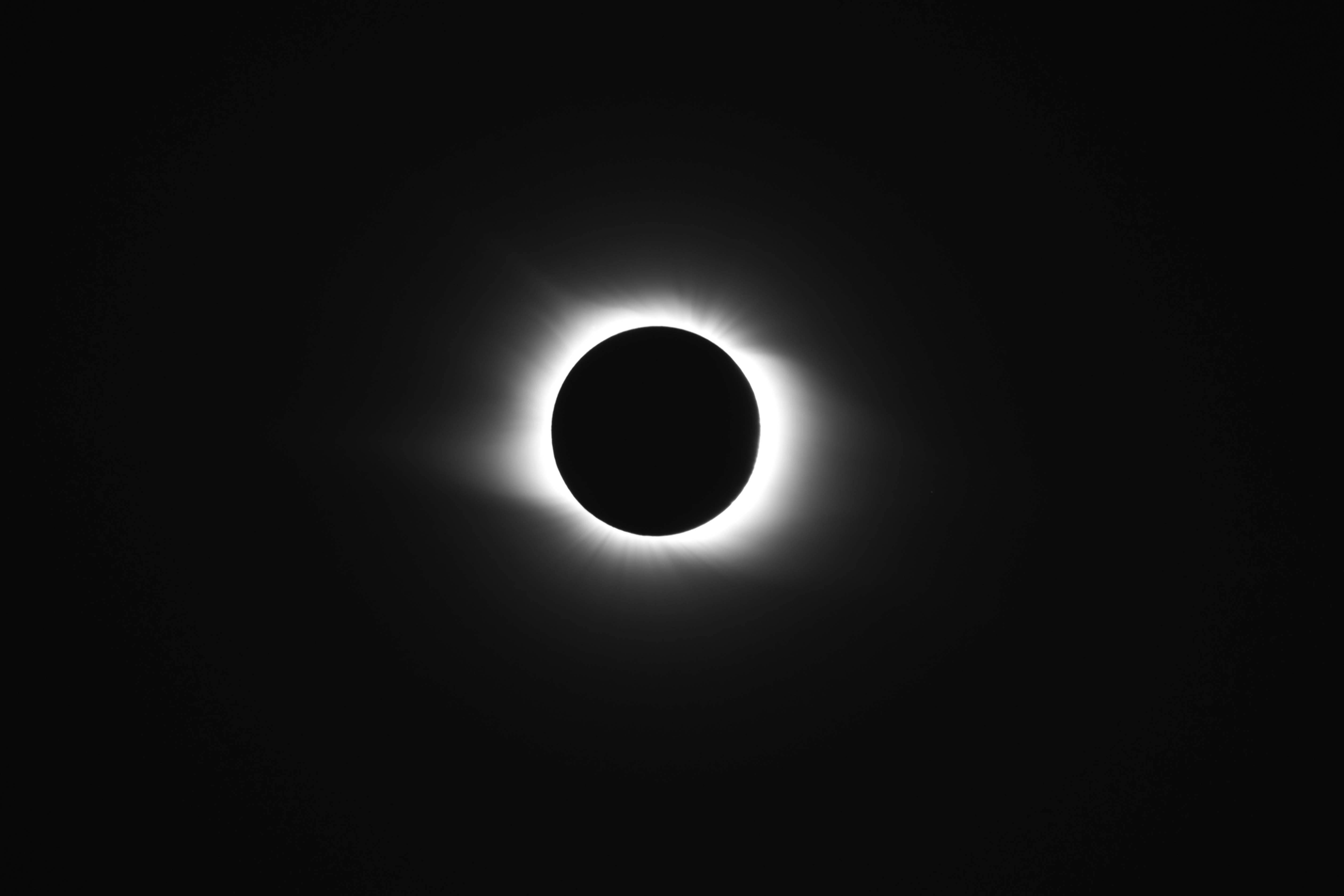The crispness of the first-light image clearly demonstrates the potential of the system, which is poised to provide astronomers with a powerful new tool for the study of a wide range of phenomena — from black holes at the centers of galaxies to the life histories of stars.
Called the Gemini Multi-conjugate adaptive optics System (GeMS), it uses five artificial guide stars made by a laser to provide extreme clarity over the largest area of night sky ever captured in a single AO observation — an area of the night sky which is 10 times larger than that covered by any other existing AO system in the world.
The reaction to this achievement has been swift and positive. When Matt Mountain from the Space Telescope Science Institute in Baltimore, Maryland, saw the first-light image, he praised the GeMS instrument team. “Incredible! You have truly revolutionized ground-based astronomy,” he said.
Mountain was the director of the Gemini Observatory when the GeMS project began a decade ago. He also put together the original team, selecting François Rigaut as the lead scientist to develop the GeMS instrument.
Rigaut was in the observatory’s control room high in the Chilean Andes when the new infrared image first appeared on the viewing monitor.
“We couldn’t believe our eyes!” Rigaut said. “The image of NGC 288 revealed thousands of pinpoint stars. Its resolution is Hubble-quality — and from the ground, this is phenomenal.”
Rigaut explained that with the new gain in angular resolution, the crowded city of stars captured in the first light image appears no more densely populated than a typical field in the Milky Way. “This is somewhat uncharted territory,” he said. “No one has ever made images so large with such a high angular resolution.”
The first-light observing run culminated a decade-long effort in instrument planning and development. “We were lucky to have clear weather and stable atmospheric conditions that night,” said Gemini AO scientist Benoit Neichel. “Even despite interruptions of the laser propagation due to satellites and planes passing by, we obtained our first image with the system. It was surprisingly crisp and large, with an exquisitely uniform image quality.”
Gemini’s new system overcomes two limitations that have plagued the previous generation of AO systems: (1) a limited number of stars bright enough to guide on; and (2) a small field of view — the size of the patch of sky observed in a single observation.
While not a new solution, lasers have proved to be an effective solution to the first problem. When no “natural” guide star is available, an artificial one is created using a powerful laser emitting the well-known orange color used in some streetlights. Observatories around the world, including both Gemini telescopes in Chile and Hawaii, are currently using the laser guide star technology.
Gemini solved the field-of-view problem with a technique called Multi-Conjugate Adaptive Optics (MCAO). By using five laser guide stars (rather than a single one as in other systems), tomographic atmospheric modeling techniques borrowed from medical imaging, and several deformable mirrors, MCAO extends the field of view of AO systems by 10 times or more. It also produces images with exquisitely uniform image quality across the entire field of view. GeMS is the first of its kind to combine laser guide stars with MCAO, which opens up more of the nighttime sky for detailed study.
“MCAO is game-changing,” Abraham said. “It’s going to propel Gemini to the next echelon of discovery space as well as lay a foundation for the next generation of extremely large telescopes. Gemini is going to be delivering amazing science while paving the way for the future.”










